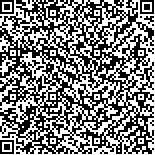侯莹,刘丽华,王庆娟,朱斐斐,张倩影,杨卫新,江钟立.减重下力线矫正训练对脑瘫患儿骨盆前倾的影响[J].中华物理医学与康复杂志,2018,40(8):599-603
扫码阅读全文

|
| 减重下力线矫正训练对脑瘫患儿骨盆前倾的影响 |
|
| |
| DOI: |
| 中文关键词: 力线 姿势 脑性瘫痪 骨盆前倾 减重下力线矫正训练 |
| 英文关键词: Alignment Posture Cerebral palsy Pelvic tilt Weight-bearing alignment training |
| 基金项目: |
|
| 摘要点击次数: 7017 |
| 全文下载次数: 7232 |
| 中文摘要: |
| 目的 观察减重下力线矫正训练(WBAT)对矫正脑瘫患儿骨盆前倾的疗效。 方法 选取站立位骨盆前倾的脑瘫患儿27例,按随机数字表法分为WBAT组、站立训练组和肌力训练组,每组患儿9例。3组均给予常规康复治疗,WBAT组在此基础上增加自行设计的WBAT训练,肌力训练组增加骨盆稳定及下肢抗重力肌群抗阻训练,站立训练组增加站立板辅助站立训练,以上3种治疗均每次20 min,每周5次,连续治疗4周。于治疗前和治疗后(治疗4周后)分别对3组患儿的骨盆倾斜角(ASIS-PSIS)、躯干倾斜角(A-P)及1 min步行距离进行评估。 结果 治疗后,WBAT组的ASIS-PSIS和A-P分别为(18.61±3.13)°和(23.31±3.81)°,站立组的A-P为(24.48±4.33)°,分别与组内治疗前比较,差异均有统计学意义(P<0.05);且WBAT组治疗后的ASIS-PSIS与肌力训练组和站立训练组治疗后比较,差异均有统计学意义(P<0.05)。治疗后,WBAT训练组的1 min步行距离为(26.81±12.61)m,肌力训练组的1 min步行距离为(21.07±8.45)m,分别与组内治疗前比较,差异均有统计学差异(P<0.05);且WBAT组治疗后的1 min步行距离与肌力训练组和站立训练组治疗后比较,差异均有统计学意义(P<0.05)。 结论 WBAT训练可显著改善骨盆前倾脑瘫患儿的ASIS-PSIS、A-P以及1 min步行距离,且其疗效优于传统的肌力训练和站立训练。 |
| 英文摘要: |
| Objective To evaluate the effect of weight-bearing alignment training (WBAT) in correcting anterior pelvic tilt in children with cerebral palsy. Methods Twenty-seven children with cerebral palsy and anterior pelvic tilt were recruited and randomly assigned to a WBAT group, a strengthening group and a standing group, each of 9. In addition to routine medication and rehabilitation training, the 3 groups received WBAT, strengthening training or standing training respectively for 20 minutes a day, 5 times a week for 4 weeks. Before and immediately after the treatment, the subjects′ anterior superior iliac spine-posterior superior iliac spine angles (ASIS-PSIS angles) were assessed along with their anterior-posterior angles (A-P angles) and distances in a 1-minute walk test. Results The WBAT group showed significant improvement in their average ASIS-PSIS angle (to 18.61±3.13°), A-P angle (to 23.31±3.81°) and the distance in the 1-minute walk test after the treatment. The standing group had significant progress in improving their A-P angles (to 24.48±4.33°), and the strengthening group had significant improvement in the distance walked in the 1-minute walk test. The average improvements in the ASIS-PSIS angle and walk distance in the WBAT group were significantly better than in the other 2 groups. Conclusion WBAT is superior to strengthening and standing training in improving the ASIS-PSIS angle, A-P angle and walking ability of children with cerebral palsy and anterior pelvic tilt. |
|
查看全文
查看/发表评论 下载PDF阅读器 |
| 关闭 |